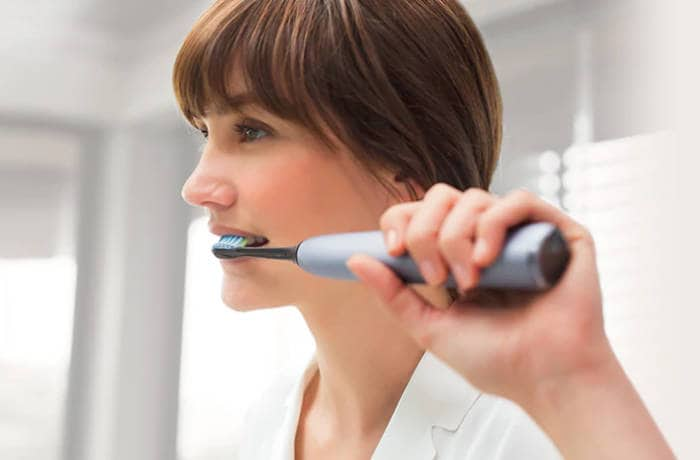
Pregnancy gingivitis treatment and prevention

It’s a well-known fact that you should brush your teeth at least twice a day.1 Unfortunately, most people don’t apply the right technique – usually because they simply don’t know how. Oral hygiene is not only a key component of the care required for the health of our teeth, but also the health of our whole body. The state of your teeth can affect your overall health and cause certain illnesses in other parts of the body.2 Knowing how to brush teeth properly will guarantee the optimal health of your teeth. In this article we’ll explore these steps to find out the correct way to brush teeth: Read on to discover our step-by-step guide on how to brush teeth properly, whether you’re using a manual or an electric toothbrush, as well as answers to the most common questions, like ‘how long should you brush your teeth?’ and, ‘when should you brush your teeth in the morning?’.
In the past, it was said to brush teeth with circular motions. Today, this technique is considered outdated, and experts advise to brush the teeth with the so-called ‘Bass-Method.’3 Below are four super simple steps for properly brushing teeth: Ultimately to brush properly using a manual toothbrush you just need to work with a system! Always begin with the inner surfaces of your upper and lower jaw. After that, get working on the outer surfaces. Finally, brush the chewing surfaces.
Ultimately, when it comes to properly brushing teeth, an electric toothbrush has a number of advantages compared to a manual toothbrush. This is because with an electric toothbrush, you can reach places in your mouth that are hard to reach with a normal toothbrush. Here’s how to use a round-headed electric toothbrush to brush properly: If you already own a sonic toothbrush, well done! Thanks to its oblong brush head, a sonic toothbrush allows you to clean multiple teeth simultaneously, without having to apply pressure to your teeth and gums. This is how to use a sonic toothbrush for properly brushing teeth: Tip: If you want to remove plaque while also combatting light tooth discoloring, try the Philips Sonicare ProtectiveClean. It not only removes up to 20x more plaque, but also offers up to 100% stain reduction and helps to whiten teeth in just one week. From learning about brushing before or after breakfast to whether or not to use toothpaste, read on to discover answers to all the frequently asked questions about how to brush properly.

Now that you know how to properly brush your teeth and keep your mouth healthy, let's have a look at some of the most common questions around toothbrushing. Once you understand the correct way to brush teeth and make the technique we’ve shared part of your daily routine, it’ll be easy to keep your mouth clean and healthy. Remember that our oral health has a big impact on the overall health of our body. Knowing how to brush your teeth properly will help you take better care of your teeth, leading to a healthier and more beautiful smile.
If you’re wondering whether you should brush your teeth before or after breakfast, we recommend brushing before. Once you have eaten, the bacteria found in your mouth begin to increase production of the acids that lead to plaque, therefore brushing – and cleaning away any plaque and bacteria – before this process starts makes much more sense.
So, you know whether to brush your teeth before or after breakfast, but what about other meals or snacks? Good technique and thorough toothbrushing is beneficial for your oral health.
However, you should wait at least 30 minutes after eating to avoid damage to the tooth enamel. It's also important to know what you can eat before and after brushing your teeth.
So, how long should you brush your teeth on each occasion of brushing? The key to a thorough oral care routine is ensuring not just that you brush twice a day but also brush for at least two minutes. This applies to the use of both a manual and an electric toothbrush.
From preschool age onwards, children can use an electric toothbrush. Make sure to get them a model specifically for kids such as Philips’ Sonicare for Kids. We also recommend you brush your teeth together with your child until they can brush properly alone.
The short answer is no. As long as you are using the correct technique to brush your teeth, using a toothbrush and water can still be an effective way to remove plaque and protect your teeth.
To ensure you are properly brushing your teeth, you should replace your toothbrush or electric toothbrush head every 3-4 months.